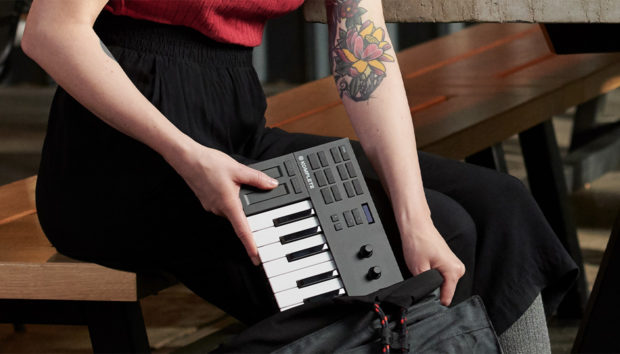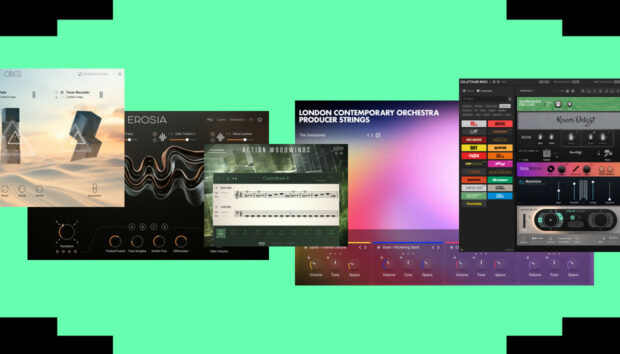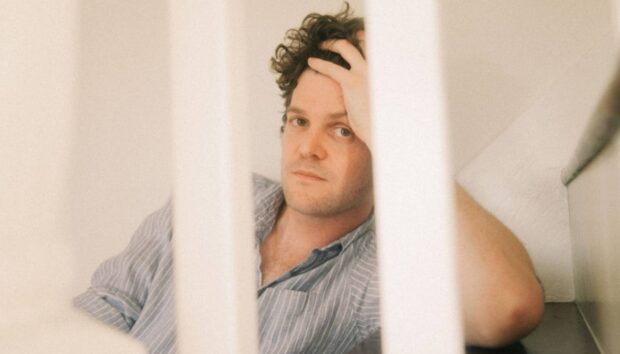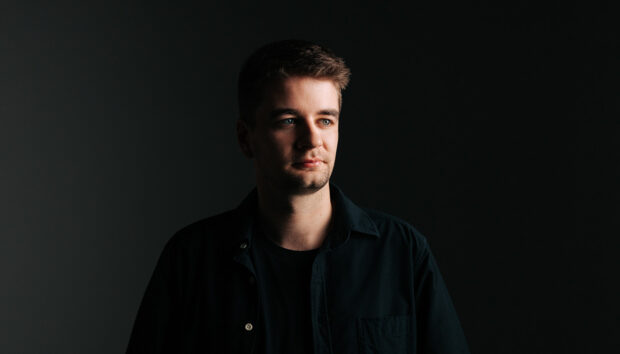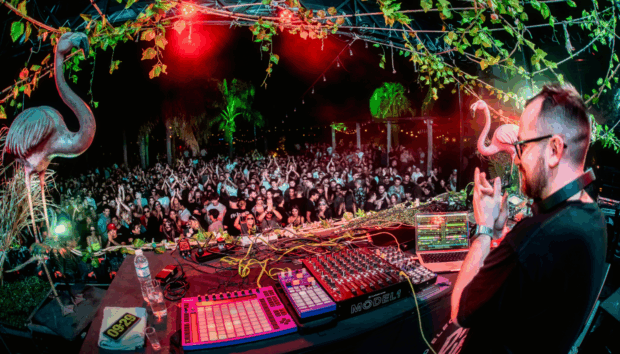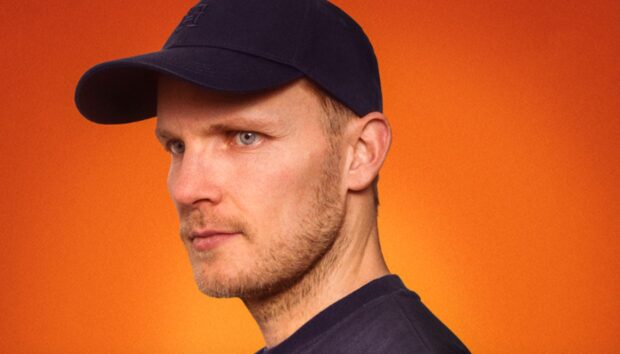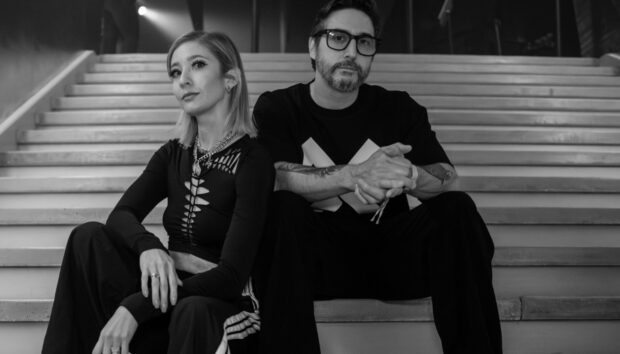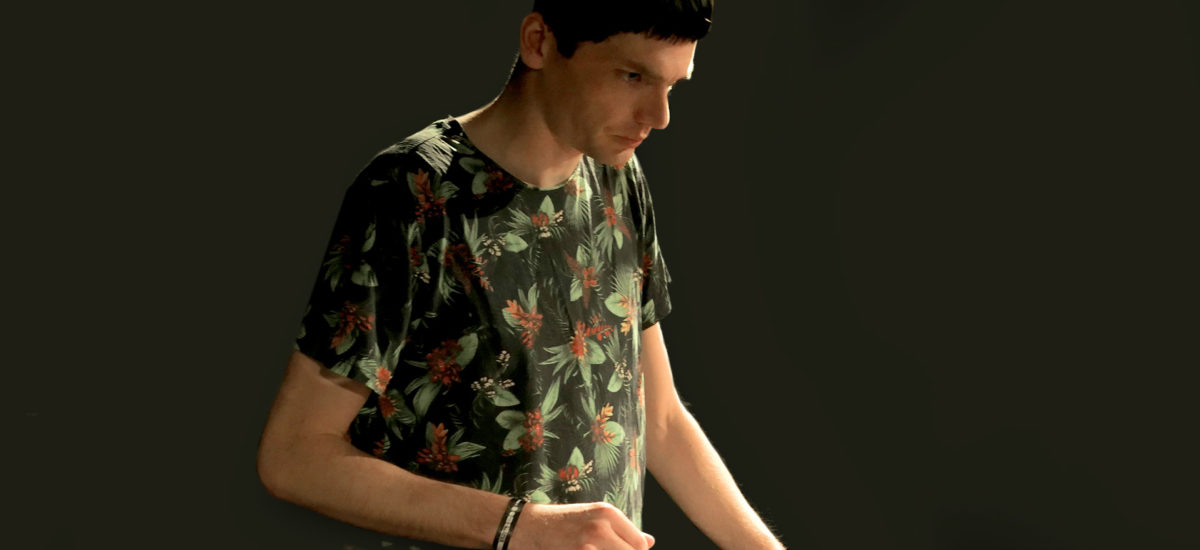
As one half of unconventional Irish techno duo Lakker and, more recently, under his solo moniker, Arad, Dara Smith has over a decade of production under his belt. With such illustrious followers as Aphex Twin and a recent acclaimed solo album and live show, pushing a sparser more minimal sound, Native Instruments caught up with Dara at the analog modular festival, Superbooth, in his new home Berlin. During the event, Dara showed off his live skills using a variety of hardware and software, revolving around REAKTOR 6 Blocks and Ableton Live, controlled with MASCHINE JAM.
Read the interview below, and watch the videos, as Dara demonstrates his approach to sound, followed by a filming of his live performance at Superbooth 2017.
How has your workflow changed over the years?
Ian, my partner in Lakker, started to make music with Reason when we were in a band together. I then went on to sell most of my hardware, and we moved fully into the box. We would meet in the studio once a week, but would swap files all the time with Dropbox. In order to keep the file-size small, we didn’t use a huge amount of audio. Everything was always MIDI to the end. We kind of still work much like that. I’m so used to sampling, you know, slicing things up.
Your own stuff is a lot sparser than the Lakker tracks.
For my own solo projects I use a lot more synthesis. Eventually I’d like to get to a place where it was just synthesis and vocals. I’ve always loved the clarity of sound that you get with synthesis – you don’t get degrading when you pitch stuff, as you would with samples.
When you’ve got an idea, how do you decide whether it’s for Arad or Lakker?
Good question. Myself and Ian have been making music together for a long time! So, you know, we’re not pulling punches in the studio. We just show each other stuff and if we’re not interested it goes.
It can be strange working with people then suddenly doing stuff on your own – there’s a nice kind of organic A&R process to teamwork.
It’s a lot slower writing music on your own. As a duo, you could have been working on a synth patch for two days and be like ‘I think this is amazing,’ and someone will just come in and go ‘that’s crap – get it out’. Then you’ll listen back two weeks later and be like ‘Actually, it is crap’.
It takes a while to learn that process of giving yourself a break, then coming back with fresh ears. Also, we’ve been changing our solo sounds – it can take a while to hone that process of knowing when things aren’t working. Are you ‘breaking boundaries and doing something really new!’… or is it just shit?
It sounds like there are some nice ‘found sounds’ in your solo stuff, but more single hits than big sampled phrases. The sound of a tin pot being hit or something?
With the solo stuff I did with Electric Deluxe, one sound was made out of an Ikea salad bowl. It’s a big silvery salad bowl and when you put water in it it makes this nice melodic ‘ping’.
On ‘Basswave‘ you drop kicks two and four so it sounds massively slowed down, but it’s basically just two kicks every bar instead of four.
I’ve always been influenced by the weird nature of grime beats and stuff like that. I remember when I heard Wiley’s ‘Ice Rink’. I was like, ‘What the hell is that?’ It’s these strange string samples, then just one kick every now and then. There’s a good bit of strange UK music that doesn’t rely on obvious kick and snare patterns. And it’s great to watch that kind of stuff really working on dancefloors now. And jit music – really strange rhythms like Jlin, her stuff is amazing. You’re waiting for something to drop, and it never does. It just builds tension for ages.
If you’re moving away from samples have you got much hardware?
Everything’s in the box. Ableton and Native Instruments, pretty much. I’ve started using the [Reaktor] Blocks now – really enjoying that. We’ve always used a lot of FM8, Absynth.
My favourite was an exercise we did in college once. A really good lecturer made us use this program called Stomper to make a whole track with one oscillator. So you would try to build your percussion into the synth patch itself. I found that really interesting. I’m always on a conquest to do that. With varying levels of success.
For me, the most important thing is that the music that comes out of the speakers is enjoyable for people to listen to
What’s your current live setup?
For Lakker it is both of us with Ableton via LINK. We used to use MIDI between two soundcards, and there used to be weird latency stuff. Then both going into a DJ mixer and different controllers.
For my live solo stuff it’s basically the same thing. And I have Roland VT3 vocal processor for some pitch correction and stuff like that. And then everything is Push or [Maschine] Jam, the hardware controller.
Then a good DJ mixer – you can do so much stuff with it. They have loads of effects now. And old school DJing skills – creative use of a fader. You can do timed gates and all that sort of stuff – pans, little volume rides on different parts.
How live can a live electronic act be?
For me, the most important thing is that the music that comes out of the speakers is enjoyable for people to listen to. I think artists have a kind of need for validation. Electronic musicians feel the need to do as much as humanly possible live. And 70% of the time people are just degrading the sound. For me, I like creatively mixing stuff together, different elements of different tracks.
And a bank of found sounds. I use my phone a lot for recording – that adds a nice localized touch. We played Mutek and there was a protest there – they had all these vuvuzelas and horns and pots and pans. They were just walking around the city making this amazing sound, and we were following them and recording. Then we got to use that in the set – as an intro, and chopped up later.
Old live acts used to have lots of MIDI gear and effects and mixers on stage – but do you think that, cutoff twiddling aside, they were often just pressing play and jockeying the odd level fader?
I found when I was working in hardware at the start, you would basically describe it as like spinning plates. You’re not really doing anything creative, you’re just doing all this work to keep it going – like changing presets or changing your program changes, getting your mixer to rearrange to a new setting.
Do you think that way of performing live has changed? You mentioned MASCHINE JAM, for example. How have you been using it?
You adapt to work with the hardware, setting up your own live set, in certain ways. Like say the top half of the slider, for example, is just doing something that’s unlistenable crap, cut that part out, and have the part that does something musical. It’s about taking the musical parameters that need to be modulated live, and then map them correctly.
Like setting the right range for your controls?
Yeah, exactly. And when you go out live you’re a bit more amped up, and you’ll tend to push things. But if you’re pushing things and it’s just turning into crap for the last bit of the fader, what’s the point? Maybe it’s more ‘dangerous’ or whatever, but it sounds like shit. Everything is in the red!
Is there any kit that you wish existed but that doesn’t?
Maybe just a really hard-wearing, long-throw fader thing, DJ mixer-style. I suppose it’s weight restrictions – Ryanair generation – in terms of gigging equipment. All our stuff we can carry with us.
How much of that is a factor? Some people have criticized some new controllers for being amazing but just not practical to carry around on flights every weekend.
Yeah, and gear going missing – you’ve arrived but your gear hasn’t – you hear so many horror stories. I suppose nowadays there is a trend towards people miniaturizing stuff as well [such as] all the Roland things.
I think once you’ve [used] a Push or Jam, and a multi-channel output into a DJ mixer – [then] sometimes a huge sprawling set-up can be too confusing. I remember that from back in the day. So many parameters, and once you get hyped up live you’re like ‘urgh – what am I doing here?’
It can be great, of course.
When people are really maestros on one piece of equipment. You see Jeff Mills using a 909, and it’s amazing. I was always influenced by dub delay. When you see a dub mixer, and they use the studio mixing desk like an instrument, even pitching certain delays, it’s amazing. Because they’re people who really know what they’re doing.
Are there bits of kit like that for you?
Yeah, we’ve used Operator in Ableton for so much stuff, because we know it back to front. I use FM8 and Absynth loads. That’s the thing: if you’re looking for a certain sound you could spend two hours cycling through millions of presets, but once you know your synths well you can just hop in there, make it yourself, and you’re done in five minutes.
That was maybe one of the advantages of before?
Yeah, there’d be these guys who just had one Bass Station or whatever, and just knew it backwards. Or Brian Eno and his DX7s.








